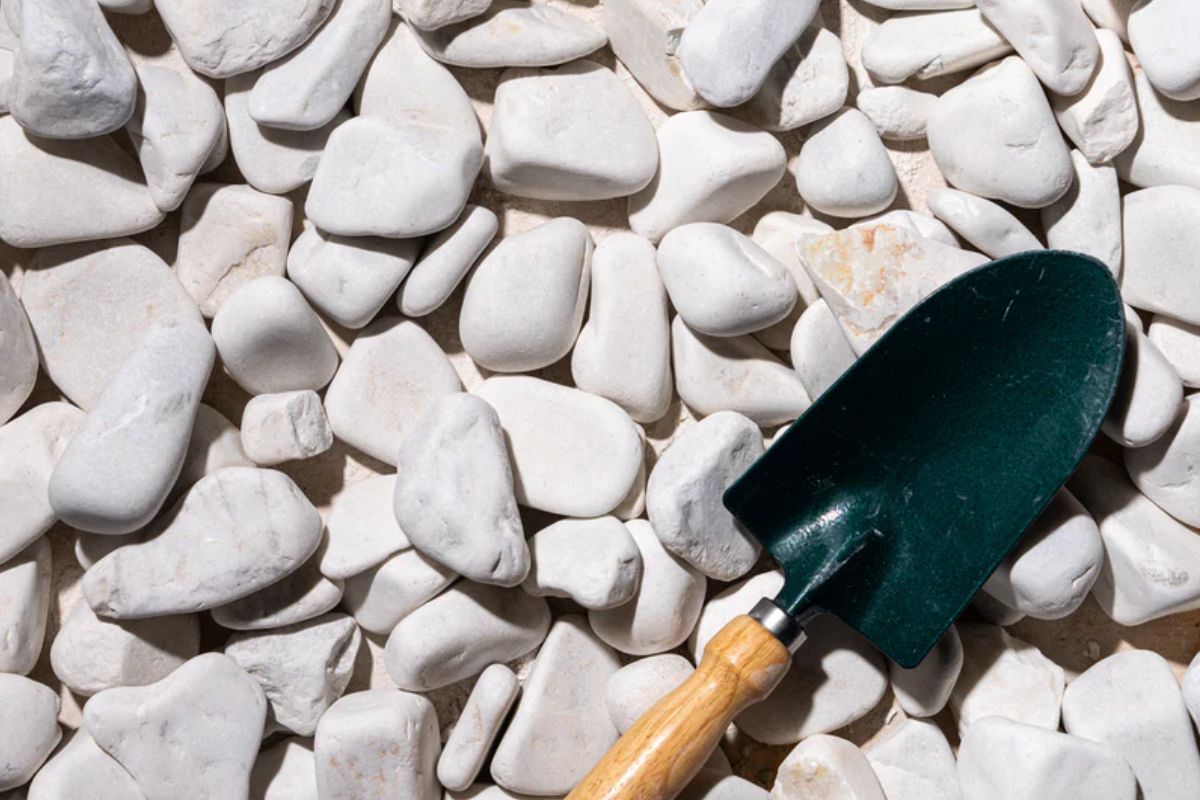Using Pebbles to Prevent Soil Erosion in Indoor Plant Pots

What is Soil Erosion?
Soil erosion is the process where the top layer of soil is worn away, often due to water, wind, or other natural forces. In indoor plant pots, soil erosion can occur when watering, leading to a loss of essential nutrients and stability for the plant. Over time, this erosion can compromise the plant’s health and growth.
How Pebbles Help Prevent Soil Erosion
1. Stabilizing the Soil
Pebbles act as a protective layer on top of the soil, preventing it from being washed away during watering. This stabilization ensures that the nutrients and soil structure remain intact, providing a consistent growing environment for the plant.
2. Improving Drainage
Proper drainage is crucial for indoor plants, as it prevents waterlogging and root rot. Pebbles at the bottom of the pot create a drainage layer, allowing excess water to escape while keeping the soil in place. This balanced moisture level helps maintain healthy root systems and prevents soil erosion caused by overwatering.
3. Enhancing Aesthetic Appeal
Besides their practical benefits, pebbles add a decorative element to your indoor plant pots. Available in various colors and sizes, pebbles can complement the look of your plants and pots, making them a stylish addition to your home decor.
4. Reducing Soil Compaction
Soil compaction can restrict root growth and water absorption, leading to poor plant health. Pebbles help prevent soil compaction by promoting better air circulation within the pot. This improved aeration ensures that the roots receive adequate oxygen, promoting robust plant growth.
Choosing the Right Pebbles
When selecting pebbles for your indoor plant pots, consider the following factors:
Size and Shape
Choose pebbles that are small enough to fit comfortably in your pots but large enough to prevent soil particles from escaping. Smooth, rounded pebbles are ideal as they do not damage plant roots.
Material
Natural stones like river pebbles, gravel, or lava rocks are excellent choices. They are durable, non-toxic, and provide a natural look. Avoid using painted or treated pebbles, as they may contain chemicals harmful to plants.
Color
While the color of the pebbles is primarily a matter of personal preference, lighter-colored pebbles can help reflect light, potentially benefiting plants that require more sunlight. Darker pebbles, on the other hand, can add a striking contrast to your plant arrangements.
How to Apply Pebbles in Plant Pots
Step 1: Prepare the Pot
Ensure your plant pot has drainage holes at the bottom. If not, you can drill holes or use a pot with built-in drainage.
Step 2: Add a Layer of Pebbles
Place a layer of pebbles at the bottom of the pot. This layer should be about 1-2 inches thick, depending on the size of the pot. The pebbles will help with drainage and prevent soil from escaping through the holes.
Step 3: Add Soil and Plant
Fill the pot with soil, leaving enough space for your plant. Position your plant in the pot, ensuring the roots are covered with soil.
Step 4: Top with Pebbles
Add a layer of pebbles on top of the soil. This layer will protect the soil from being disturbed during watering and add a decorative touch to your plant arrangement.
Benefits of Using Pebbles
Longevity and Durability
Pebbles are a long-lasting solution to soil erosion, requiring minimal maintenance. Unlike other materials that may degrade over time, pebbles retain their shape and function, providing continuous protection for your plants.
Eco-Friendly
Using natural pebbles is an environmentally friendly choice. They do not release harmful chemicals into the soil or water, making them safe for both plants and the environment.
Cost-Effective
Pebbles are an affordable solution to soil erosion, available at most garden centers and home improvement stores. Their durability means you won’t need to replace them frequently, offering long-term cost savings.
Fun Fact
Did you know that pebbles can also help deter pests? The rough surface of the pebbles makes it difficult for pests like slugs and snails to reach the soil, providing an added layer of protection for your plants.
Conclusion
Using pebbles in indoor plant pots is a simple, effective, and visually appealing solution to prevent soil erosion. By stabilizing the soil, improving drainage, and reducing soil compaction, pebbles ensure your plants remain healthy and thriving. Not only do they serve a functional purpose, but they also enhance the aesthetic appeal of your indoor garden.
For more information on plant care and gardening tips, visit Science Journal for authoritative research on this topic.
At Growhub, we are dedicated to providing the best solutions for your gardening needs. Explore our range of products and tips to keep your indoor plants healthy and beautiful.
By incorporating pebbles into your indoor plant pots, you can create a stable and nurturing environment for your plants, ensuring they continue to grow and flourish.








0
0
Профессиональный сервисный центр по ремонту бытовой техники с выездом на дом.
Мы предлагаем:сервисные центры по ремонту техники в мск
Наши мастера оперативно устранят неисправности вашего устройства в сервисе или с выездом на дом!